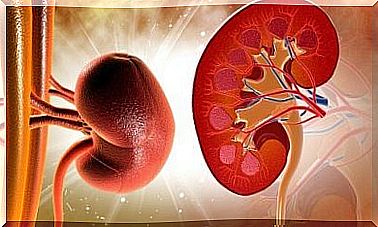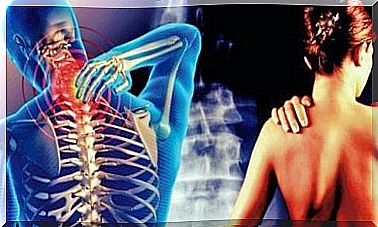What Is The Hypermobility Of The Sacroiliac Joint?
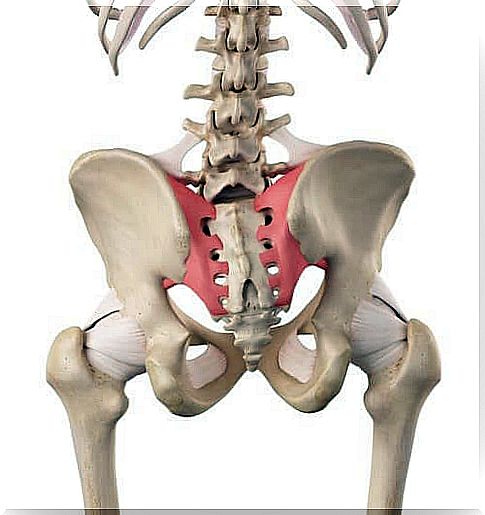
The sacroiliac joint is located below the lumbar spine, near the lower part of it, above the coccyx. This structure connects the sacral bone (that triangular bone located at the lower end of the spine) and the pelvis (the iliac crest). Hypermobility of the sacroiliac joint and other similar problems are more common among young or middle-aged women.
The sacroiliac joint has the following characteristics:
- It is small, very strong and strengthened by ligaments
- It does not show increased mobility
- It transmits all the forces from the upper body to the hips and legs
- It acts like a shock absorber
Anatomical structure of the sacroiliac joint
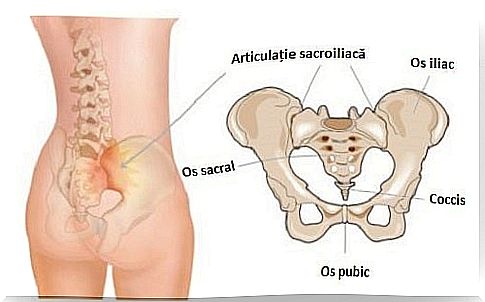
The pelvis forms the base of the torso, supports the abdomen and is the point of connection between the lower limbs and the torso. Thus, it is a closed osteoarticular ring, consisting of three groups of bones and three joints.
The three bone groups are:
- Two symmetrical iliac bones
- A symmetrical sacral bone
- The vertebral block made up of the fusion of five sacral vertebrae
The pelvis is very important in terms of the balance of the spine, because any problem in the first structure will affect the second. For this reason, we can consider it a functional unit.
The sacroiliac joint connects the spine (which is flexible) and the pelvis (which is stable). In addition, scientists believe that the sacral bone is part of the lumbar vertebrae and that the iliac bones are components of the lower limbs.
Causes of sacroiliac joint pain
It is not very clear why this region can be affected by pain. Some experts suspect that a change in the normal movement of the joint is to blame.
Possible sources of sacroiliac pain include:
- Hypermobility of the sacroiliac joint: That is, this region of the back has increased mobility and instability. Patients will experience pain in the lumbar region or hips, and discomfort may radiate to the groin area.
- Hypomobility of the sacroiliac joint: In this case, the sacroiliac joint has reduced mobility. Thus, patients experience pain in the lumbar region on the side or in the buttocks. The pain may radiate along the legs.
The discomfort affecting the sacroiliac joint has been described as similar to sciatica pain, which is caused by radiculopathy.
Evaluation of the sacroiliac joint
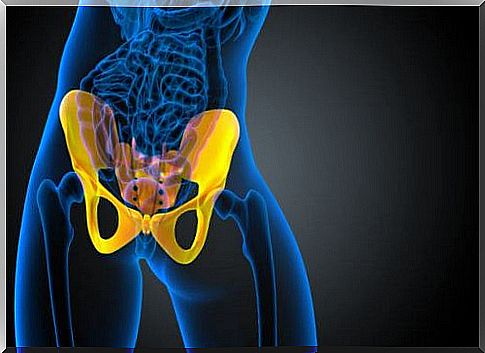
There are many tests that can test the mobility of this joint to diagnose hypermobility and other similar problems. The complexity of the tests varies. They are adapted by each physiotherapist.
At the same time, different tests can produce different results. The anamnesis is very important before any type of medical examination, because it can guide the specialist to the correct test.
Among the most common diagnostic methods are:
- Sacroiliac joint mobility test: Physicians should consider this test, which provides information about mobility within the joint structure, for the initial assessment of the joint.
- Downing test: Determines the presence of lesions and the difference between the total or partial mobility deficit of the iliac bones in the sacrum. In fact, this test includes two separate examinations:
- Elongation test
- Shortening test
- Sliding from the sacrum to the abdomen: This technique can detect joint blockages and any other symptoms that occur during the maneuver.
- Gillet hip flexion test: With this maneuver, the doctor can diagnose decreased mobility of the ilium or sacral bone.
Types of treatment for hypermobility of the sacroiliac joint
Problems with the sacroiliac joint can be treated with the help of several physiotherapy techniques:
- Joint release
- “Landslides”
- Stretching exercises
- Reorganization of neuromuscular chains
A few extra tips
In addition to the measures presented above, there are other tricks that patients can resort to, such as applying ice and heat or rest. They can also opt for analgesic drugs, supports, postural correctors and controlled exercise.
However, keep in mind that you should consult a doctor if you experience discomfort in the sacroiliac region. Do not attempt any treatment without specialist supervision.



